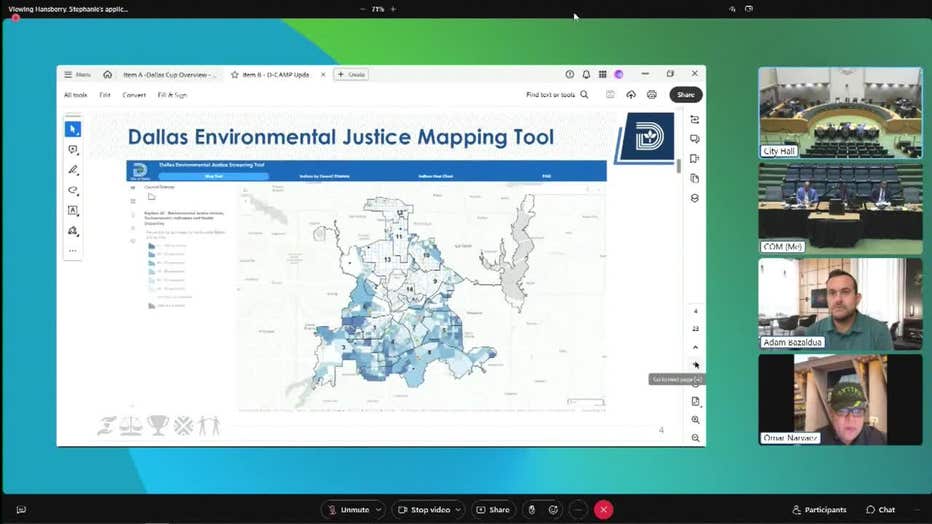Air quality monitors alert Dallas City Council about hot spots for pollution

Council concerned over air pollution hot spots
With 24 pollution sensors now installed throughout the city of Dallas, some council members want the city to do more with the information it is gathering.
DALLAS - Air quality monitors in Dallas show some parts of the city have more pollutants than others.
Now, Dallas City Council members are working to figure out what to do about it.
Dallas city staff explained that the pollution level data the city now has in different areas across the city can be used as the city considers where to allow future development. But some council members want to explore what more the city can do to create change now.
With 24 pollution sensors now installed throughout the city of Dallas, some council members want the city to do more with the information it is gathering.

"It is great we try to fix things. But if we continue to let things progress in the same manner without trying to stop them, we are doing a disservice to residents," said Councilmember Adam Bazaldua. "I would like to see data used in a more proactive manner."
Monday, Dallas city staff explained sensors found elevated levels of pollution at:
- South Central Park
- West Dallas Multipurpose Center
- Fish Trap Lake
- Larry Johnson Recreation Center
- Mill Creek Batch Plant.
At the Mill Creek location, the city was able to take action.
"We found that diesel-heavy equipment was idling," explained Carlos Evans, director of the Office of Environmental Quality. "We notified the company, and they corrected it. Now, we have better levels."
Evans says the city can only do so much when it comes to regulating the pollution sources. That is primarily the job of federal and state regulators.
"We can make sure the inspectors prioritize the communities that are overburdened by pollution. We can use that data as a team to prioritize inspections in that way," he said.
City staff said they are still working to analyze the data to get the full picture of pollution trends in the city.

Councilmembers Carolyn King Arnold and Bazaldua urged staff to work faster.
"The data analysis is important, but we are late to the party," Bazaldua said. "Injustices did not happen overnight. Not much will change. If we have seen trends, I don't know what we are waiting for."
"I'm ready to go on their behalf. We have all the data we need," Arnold said. "Now is the time for us to do what we should have done years ago."
The data the city is collecting is publicly available online.
Currently, the city only releases the data twice a year. City staff would like to try to increase that to a monthly release.

